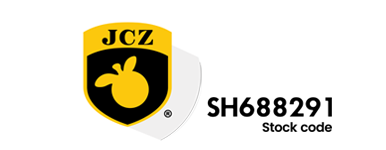In recent years, the manufacturing industry has experienced a significant transformation, thanks to advanced technologies such as laser cutting. At the heart of this innovation lies laser cutting machine software, which plays a pivotal role in enhancing the precision and efficiency of laser cutting processes. This article delves into the features, benefits, and applications of laser cutting machine software, providing insights into how it is reshaping the landscape of manufacturing and design.
Understanding Laser Cutting Machine Software
Laser cutting machine software is a specialized program that enables users to create, optimize, and control cutting paths for laser machines. Featuring an intuitive user interface and compatibility with various file formats, these software solutions allow designers and engineers to import designs from CAD software, prepare them for the cutting process, and manage the machine’s operations.
Key Features of Laser Cutting Machine Software
1. Design Import and Compatibility: The best laser cutting machine software can handle multiple file formats, including DXF, SVG, and BMP, allowing seamless integration with popular design tools like Adobe Illustrator and AutoCAD. This compatibility ensures that designers can work within their preferred environments and export files directly to the laser cutter.
2. Path Optimization: One of the critical features of laser cutting machine software is its ability to optimize cutting paths. By analyzing the design and determining the most efficient route for the laser to take, the software minimizes the amount of time and material wasted, ultimately leading to cost savings.
3. Parameter Adjustment: Different materials require specific laser settings to achieve the desired cut quality. The software allows users to adjust various parameters such as laser power, speed, and frequency, enabling tailored settings for different materials like wood, acrylic, and metal.
4. Simulation and Preview: Before initiating a cut, many software solutions offer simulation capabilities that allow users to visualize the cutting process. This feature helps identify potential issues, such as overlapping cuts or collisions, ensuring that the final product will meet expectations.
5. Remote Access and Control: Modern laser cutting machine software often includes cloud-based features. This capability enables remote access to the cutting machine, allowing users to monitor progress, make real-time adjustments, and even troubleshoot issues from afar.
Benefits of Using Laser Cutting Machine Software
1. Increased Precision and Accuracy: The high level of control afforded by laser cutting machine software ensures that cuts are made to exact specifications. This precision is especially important in industries where dimensional accuracy can significantly influence the final product’s functionality.
2. Enhanced Efficiency: By optimizing cutting paths and automating various processes, the software reduces machine idle time and increases throughput. This efficiency helps manufacturers meet tight deadlines and respond quickly to dynamic market demands.
3. Material Savings: The optimization features of laser cutting software contribute to reducing material waste. By carefully planning the cutting layout and paths, companies can maximize their use of raw materials, leading to cost reductions and minimizing environmental impact.
4. Streamlined Workflow: The integration of cutting processes into a centralized software platform allows for a more streamlined workflow. Designers can easily collaborate with operators, and all aspects of the project can be managed from one place, reducing communication errors and improving productivity.
5. Versatile Applications: Laser cutting machine software is widely used across various industries, including automotive, aerospace, apparel, and architecture. Its versatility makes it an invaluable tool for both small-scale artisans and large manufacturing plants.
Conclusion
In conclusion, laser cutting machine software is an integral component of the modern manufacturing landscape, providing users with the tools necessary to create precise, efficient, and cost-effective cutting solutions. As technology continues to evolve, the role of software in the laser cutting process will only become more pronounced, leading to further innovations and improvements in design and manufacturing. Embracing these advancements not only enhances operational capabilities but also positions businesses at the forefront of industry development, ensuring they remain competitive in an ever-changing market.
由投用户稿件整理稿件发布,不代表本站观点及观点,更多交流学习之用,如涉及版权等问题,请随时联系我们(yangmei@bjjcz.com),我们将在第一时间给予处理。


![[20w fiber laser marking machine]Exploring the Amazing Capabilities and Applications of a 20W Fiber Laser Marking Machine in Modern Manufacturing and Crafting](https://www.ezcadchina.com/wp-content/uploads/2024/06/Enhanced-Metal-Fiber-Laser-Cutting-Using-MCS-F-Series-Laser-Cutting-Controllers_1-500x383.jpg)
![[engraving software free download]Discover Amazing Engraving Software Free Download Options: A Comprehensive Guide to Choose the Right Tool for Your Creative Projects](https://www.ezcadchina.com/wp-content/uploads/2024/05/Application-of-large-size-intelligent-continuous-laser-processing-system-500x383.jpg)
![[lmcv4 fiber]Exploring the Innovative Applications and Benefits of LMCV4 Fiber in Advanced Textile Engineering and Sustainable Fashion Industry](https://www.ezcadchina.com/wp-content/uploads/2024/07/Is-Mopa-laser-better-than-fiber-laser-500x383.jpg)
